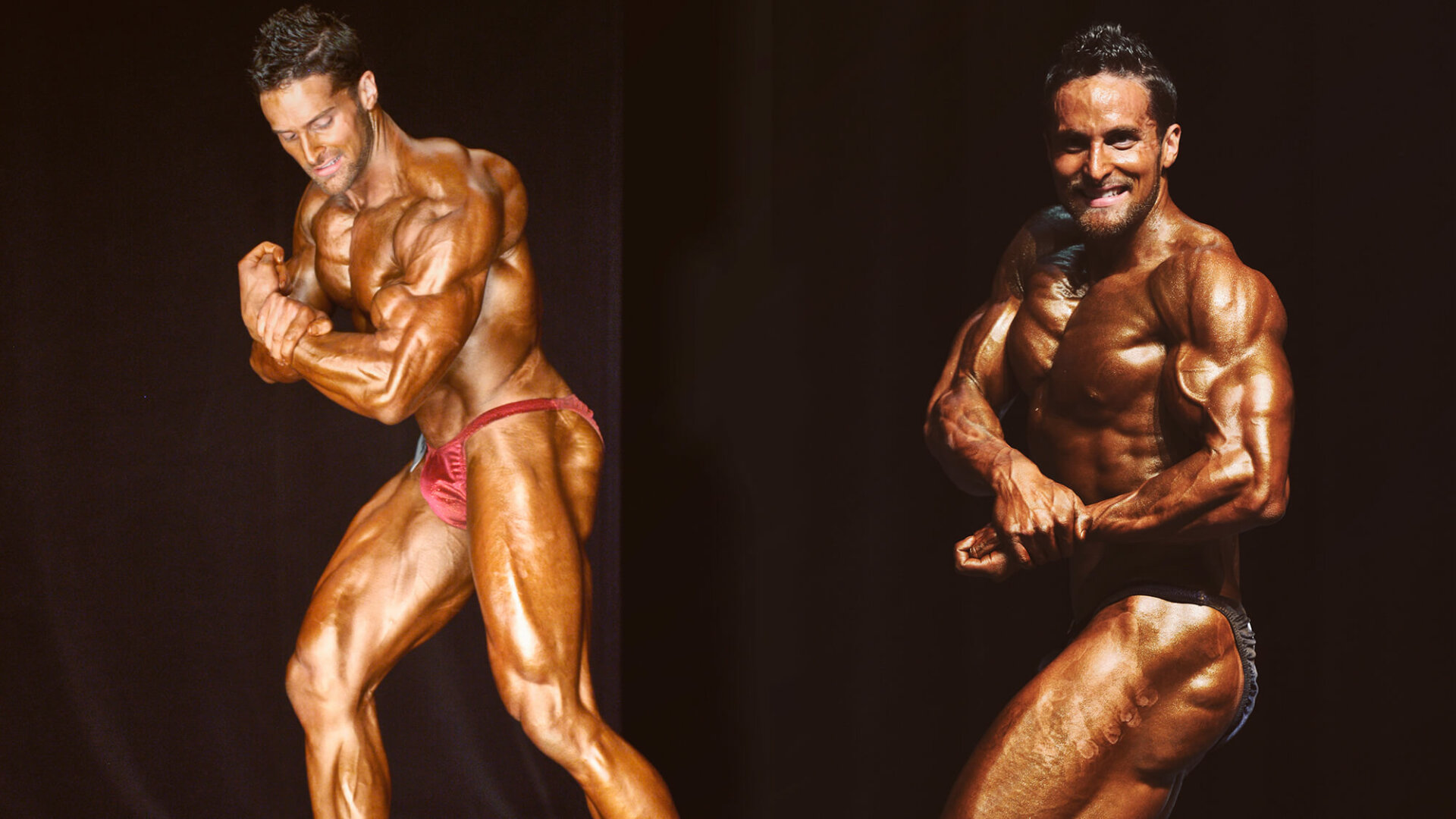During your quest for a heavier bench and bigger pecs, you have to put a lot of time in on your pushing motions. But the downside is that all the compression, internal rotation, and lack of pulling can give you a junky shoulder and hamper your gains. To make matters worse, a bum shoulder can affect the way you grip the bar during your back squat. So you want to address any lack of range of motion so that all your lifts are strong and pain-free.
There is a way to make your shoulder mobility better. You’re going to learn some of the more neglected movements from your training and get your shoulders mobile again. That said, we’re going to look at two areas to work on to help you with your shoulder mobility and demonstrate some exercises to help with it as well. Having said that, let’s look at an abridged version of some basic shoulder anatomy.
What you need to know
For our purposes, we’re going to look at the scapula (shoulder blades) and the humerus (upper arm). The motions of which are as follows:
Scapula
- Elevation— if you do a barbell shrug, for instance, your scapulae have to elevate, and your trapezius muscles facilitate this motion.
- Depression— in a deadlift, scapular depression is a passive action, as is standing with your arms by your side. When you perform a dip or a pull-up, scapular depression becomes an active motion. Your lats are a big player in scapular depression, along with your rhomboids.
- Protraction— this is the forward movement of the scapula produced by your serratus anterior. In powerlifting and the training around it, you don’t do this often. For one thing, if you’re benching, you want to minimize the movement of the bar to get a complete lift. The judge is looking for you to lock out the bar, not how far forward your scapulae move, so you train it as such. This leads us to
- Retraction— when you squat and bench, you squeeze your shoulder blades together to rest the bar and get tight. Accomplished by the rhomboids and the trapezius, you also get a lot of extra work on these muscles in training your accessory movements, like your barbell and dumbbell rows.
- Upward and downward rotation— Upward rotation aids in putting your hands over your head, and downward rotation helps bring them back down to our sides. Examples include military presses for upward rotation and dips for downward rotation.
Humerus
- Abduction— the same motion as performing a lateral delt raise, your medial deltoid is the prime mover in this motion.
- Adduction— accomplished by the lats, pecs, and teres major and minor, this is when you bring your humerus back to the midline, or beyond. Exercises like dips, pull-ups, and lat pull-downs are examples of humeral adduction.
- Flexion— lifting your arm straight out and even overhead, your pecs and your front deltoid assist in shoulder flexion. Examples include military pressing, pushups, and benching.
- Extension— aided by your lats, teres major, and your rear delt, this is when your humerus moves behind you. Some examples include seated cable rows, dumbbell rows, and lat pull-downs.
- Internal and External rotation— long story short, your rotator cuff muscles control these. Four of which have their origin at the scapulae.
Besides those, there are many “in between” versions of these motions, such as horizontal adduction and abduction. Moves like the bench press and rear delt flyes would be examples of these. Not only that, when you get into these motions, as well as the rotary movements, you begin to see the complexity of the bones involved with your shoulders. Therefore, your shoulder is capable of a large amount of range of motion, and intricate in its structure.
Owing to its complex structure, if you experience a loss of function, it behooves us to look at other areas as well. The thoracic spine can be that next step. To that end, let’s look at some of its basic motions.
Thoracic Spine
- Flexion— bending of the upper back in a forward direction.
- Extension— bending of the upper back in a backward direction.
- Rotation— this is the action of twisting your upper back to the left or to the right.
With this knowledge, if something doesn’t move like it should—be it too much, or too little, or almost not at all—can put a damper on your training and your life. Since we just spoke of the thoracic spine, let’s focus on this area first.
T-Spine Extension
Aside from back problems later in life, if you have less than adequate thoracic spine mobility your ability to rotate your scapula upward and flex your shoulder will be limited. One of the things you can work on first is your t-Spine extension. Note that in the video I am not using a lot of weight. Depending on your strength levels, if you have been training a while you can get away with doing upwards of 95lbs on this if it doesn’t put any undue stress on your spine. A good starting point is always the empty bar, just to see how it feels, and move up from there as needed. You also want to flex your glutes a bit and tighten your abs to keep anything else from moving. Focus on just your upper back for this. At the end of the movement, you want to stand nice and tall.
One other drill you can use is a static hold. I didn’t video it, but if you’re familiar with front squats, this will not be difficult. To start, pick a heavier than normal weight and load it like you are going to front squat. Either the Olympic version with the horrific wrist position, or the cross armed version will do. Proceed to gear up for a front squat, but instead of walking it out, stand there in position with it for about 15 seconds.
The first exercise will help you load the spine to move it into extension, the second will strengthen it in the extended position. If you don’t have the strength in your upper back, you might dump the load or fall forward.
The Scapulae
Upward rotation
The video demonstrates an upward shrug with a barbell. You’ll notice that I have a bent elbow, and my humerus isn’t straight. My reason for performing it this way is that it allows me to feel the rotation happening as I do it, compared to using a straight arm. A simple cue is to imagine that you are trying to move your shoulder behind your ear. Give it a shot using a lighter weight so that you can work your rotators and work it through a full range of motion. If you can’t move it at a full range, lower the weight or keep practicing in the range of motion in which you can move.
Bonus
This video of a wall slide has you working both your t-spine and your upward scapula rotation. This is an exceptional drill and I like it because it helps me in a few important ways
- You can feel the scapulae rotating upward
- You have to be mindful of your lumbar positioning
- You have to extend the t-spine to keep your back against the wall
Keep in mind that your arms have to touch the wall at all times for it to be effective, and like before work in the ranges of motion that you can. If you have pain, don’t fight through it. Just work where you are able to.
Downward Rotation
In this video, we’re doing an overhead band pull-apart. Perform these at a lower tempo to feel the downward movement of your shoulder blades, and keep the band close to you. In addition to that, keep your scapulae depressed (activate your lats) with a bit of retraction. Once you have the position there, imagine you are ripping the band in two and trying to reach the side walls.
Protraction
Always “down and back” with our cues, we spend so much time in this position, that it’s easy to lose the ability or the inclination to move the shoulder blades forward. The push-up plus is an excellent way to work the serratus anterior, the muscles responsible for scapular protraction.
One way to go about this particular move is like I do in the video. Get in a plank position with your hands shoulder width or less apart, and push your hands into the ground. You also need to keep your elbows straight. If you have a friend, have them place their hand in between your shoulder blades, and focus on pushing their hand up. If you have no friends (no judgment here), focus on reaching your upper back as high as you can. The other option is to add the protraction at the end of your regular push-up.
Retraction
Last, we come to scapular retraction. If you look at the video, we’re doing some horizontal band pull-aparts. If you’re new to this, you can reset your starting position every rep. Once you practice more, keep your shoulder blades depressed and squeezed and move only the humerus. For added effect, hold the position for a second or two. The cue is going to be like before—reach out to the side walls as you pull the band in two.
Application
I like to choose the drill based on what I am doing that day, or what I have time for. The good news is that one or two sets of ten of each of these once or twice a week is good enough. For example, your day might look like this:
- Shoulder day— For this day, you definitely want to perform your wall slides and overhead shrugs. Do one or two sets of ten of each, then move on to your overhead work and the rest of your day.
- Bench day— Start with your horizontal band pull-aparts to feel the retraction you need so you can perform your bench with proper form. One to two sets of ten should be good. After your bench work out, do one to two sets of ten of the push-up plus if you’re feeling tight in the shoulders.
- Squat day— This would be the time to work on your t-spine strength mobility. Throw the front squat holds in for a few sets of 15-20 second holds, and follow up with one or two sets of ten of the t-spine extensions.
These are some options, but you can throw them in anywhere you feel applicable. Furthermore, you don’t have to do all of them. If you know what you lack and what you need work on, you can choose the drills based on that.

